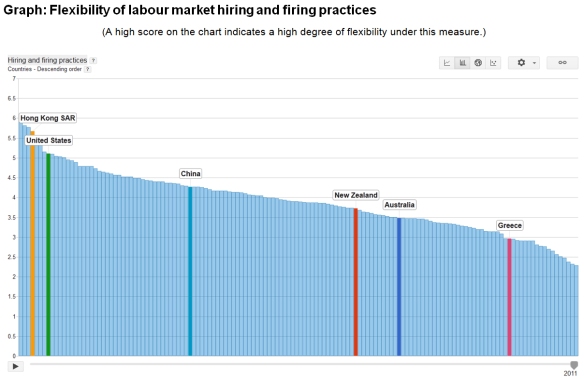The ‘creative destruction’ of competitive processes requires labour and other resources to be continually shifted from contracting areas of the economy to expanding areas. Rigid labour markets impede this process, with government regulations being a common cause of inflexibility.
A March 2012 IMF Working paper here uses statistics on 97 countries between 1980 and 2008 to assess the importance of labour market flexibility. It finds that financial crises initially have a large negative impact on unemployment, but this effect rapidly disappears in the medium term in countries with flexible labour markets. There is less pronounced, but more persistent, unemployment in countries with more rigid labour market institutions. No surprises there.
A second March 2012 IMF Working Paper here by the same authors, also using a panel of 97 countries but this time spanning the period from 1985 to 2008, suggests that improvements in labour market flexibility, particularly in respect of hiring and firing regulations and hiring costs, reduce unemployment, youth unemployment and long-term unemployment.
Given the importance of ease of hiring and firing for flexibility, it is regrettable that New Zealand ranks so poorly in the world (86th) in respect of such practices – according to the latest World Economic Forum’s Global Competitiveness Index 2011-2012 (see the graph below).
More happily, New Zealand ranks much better for other aspects of labour market flexibility in this index, being 10th in the world overall.
Note that the ranking for hiring and firing is based on surveyed opinion rather than ‘hard’ data.
Readers can create their own charts here using this database.


